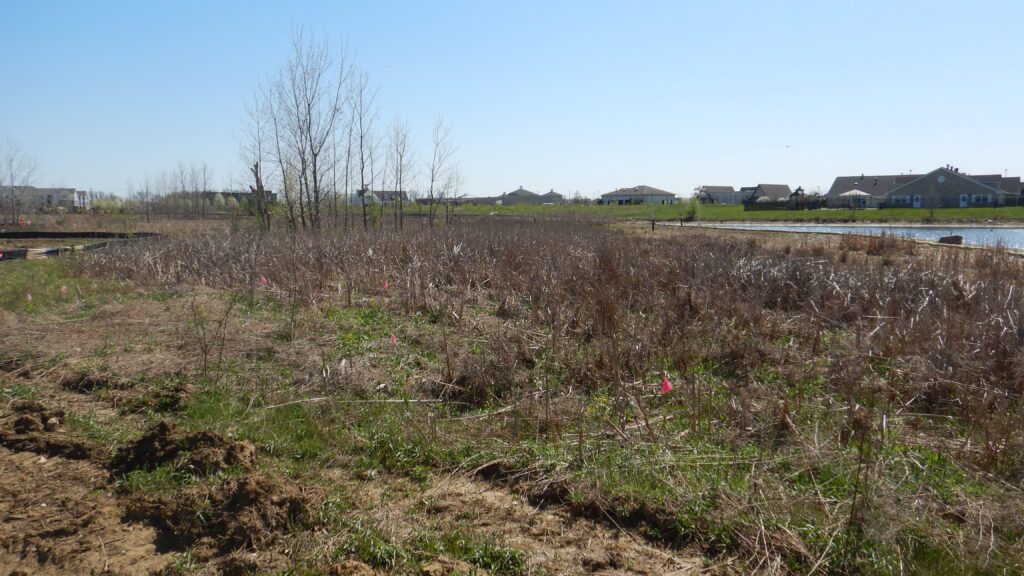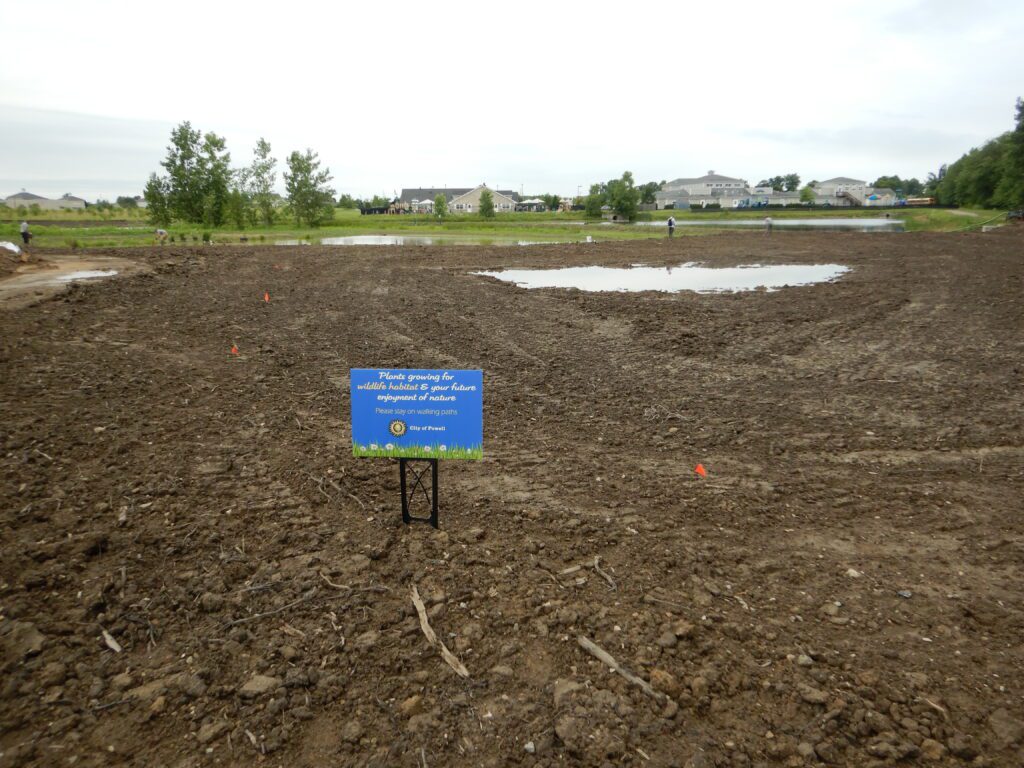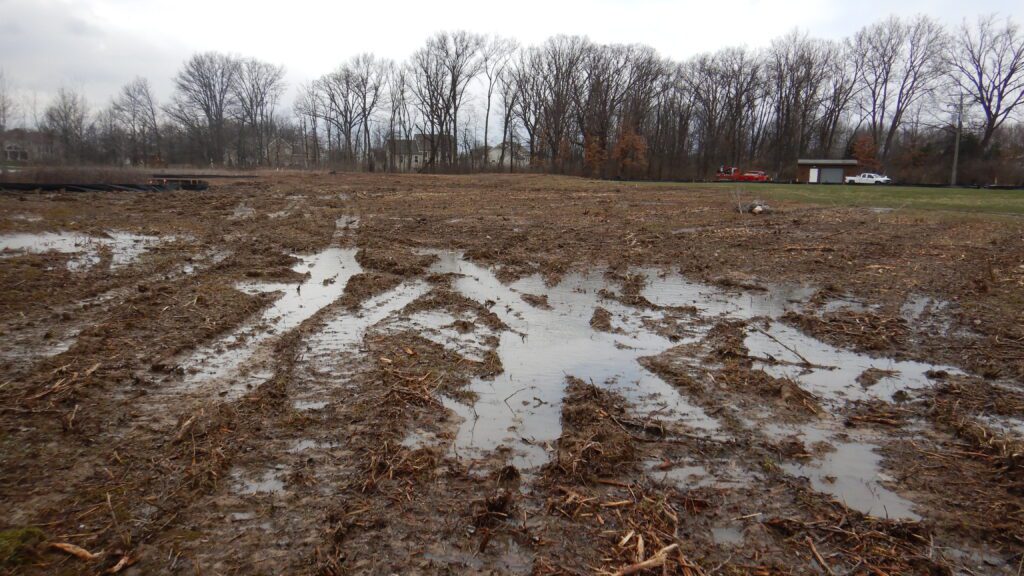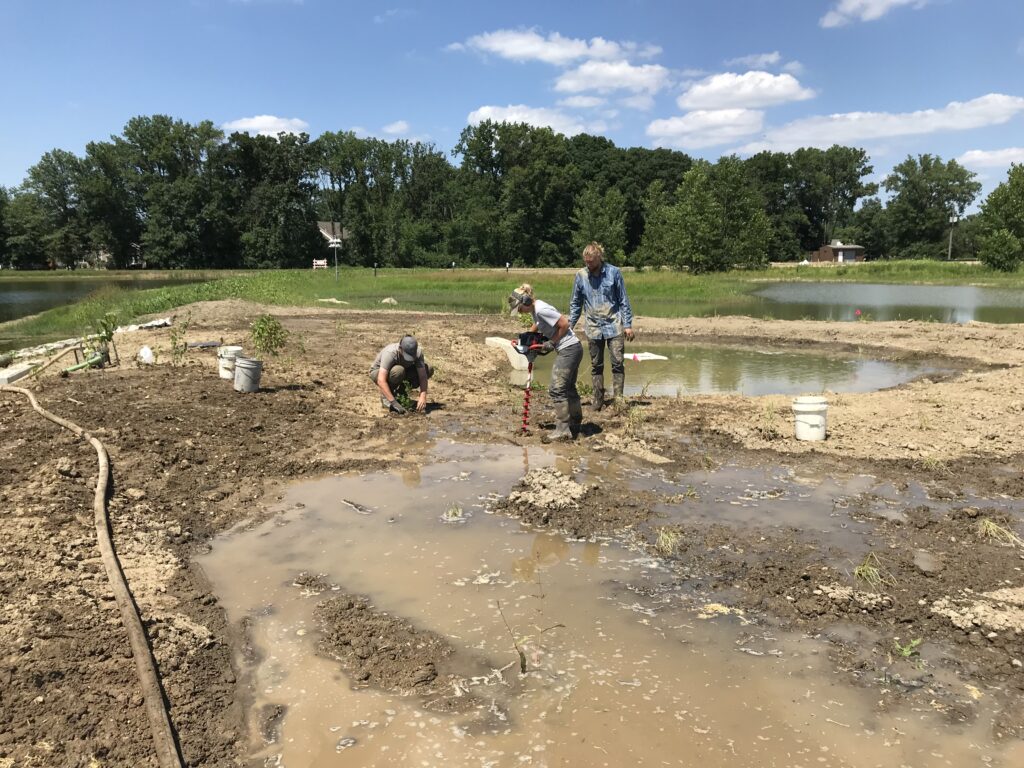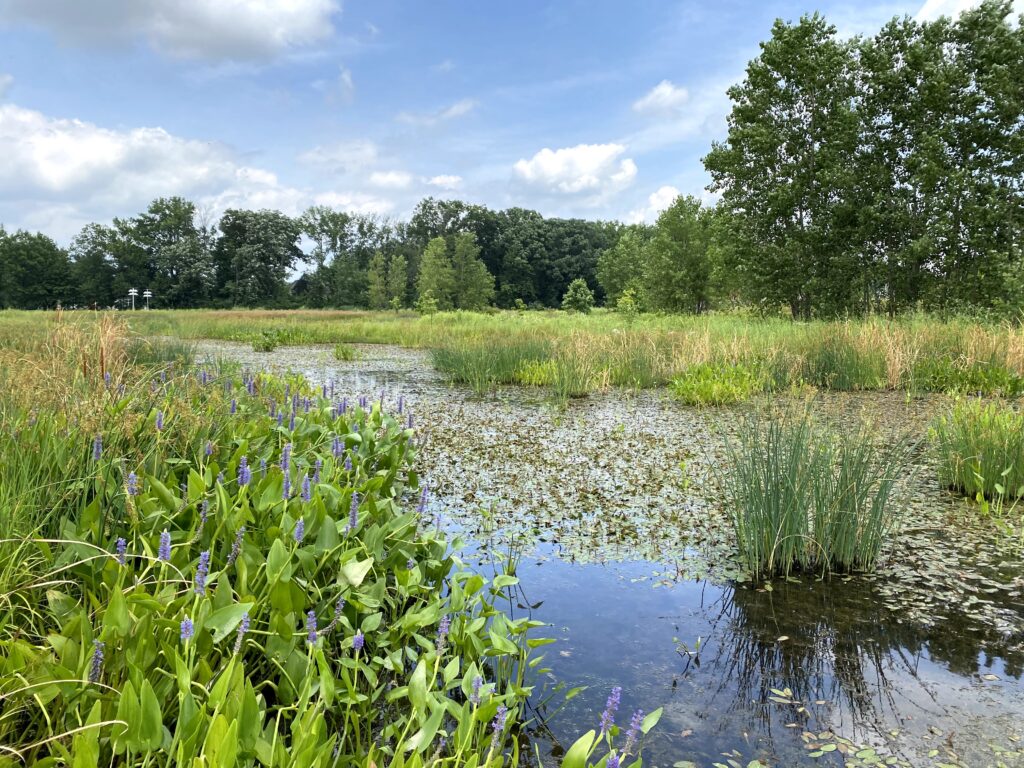Seldom Seen Park Wetland Mitigation
In planning the development of a public park off of Seldom Seen Rd., the City of Powell recognized the need to hire a wetland consultant. MAD was initially retained to complete the wetland delineation and assessment, and Powell has kept the firm involved in the permitting, mitigation and construction oversight of this innovative project that will preserve the largest wetland feature and expand and enhance the wetland resource through onsite wetland mitigation. Although broken into discrete contracting phases (e.g., delineation, design, permitting, bid set preparation, construction oversight, and planting) through the client’s purchase order process, from the initial site analysis through planting, this design-bid-build project exceeded $250,000. MAD’s fees totaled ~$90,000.
MAD identified and delineated several existing wetlands onsite, in addition to a stormwater basin that was to be left intact. While many of the wetlands were avoided, there were some that are to be filled and graded as a result of the park’s development. MAD worked with the City to obtain the necessary permits for these impacts, including a Section 404 Nationwide Permit from the U.S. Army Corps of Engineers and an Isolated Wetland Permit from Ohio EPA. MAD successfully negotiated with Ohio EPA to allow onsite mitigation to enhance and expand the existing wetlands.
MAD then completed a formal Mitigation Plan, which included the determination of credits, construction sequence and related recommendations, a planting plan, a maintenance plan, performance standards, monitoring requirements, and long-term protection provisions. MAD has worked closely with the City, planners, engineers, and construction contractors to clearly communicate requirements and establish policies and procedures to avoid impacts to protected wetland areas during construction.
Construction of this project began in March 2018 and was completed in July (MAD provided construction oversight services). Disturbed areas were restored with a diverse assortment of native plants, installed by MAD as seed, plugs, live stakes, and containerized trees. Supplemental plantings occurred elsewhere throughout the preserved wetlands and adjacent buffers to improve the overall diversity, habitat quality, and ecological functioning of the site.
The site is currently in its third year (5/5) of monitoring. Disturbed areas have established vegetation, minimal invasive species presence, and over 100 species of wildlife and a myriad of plants species documented already.



